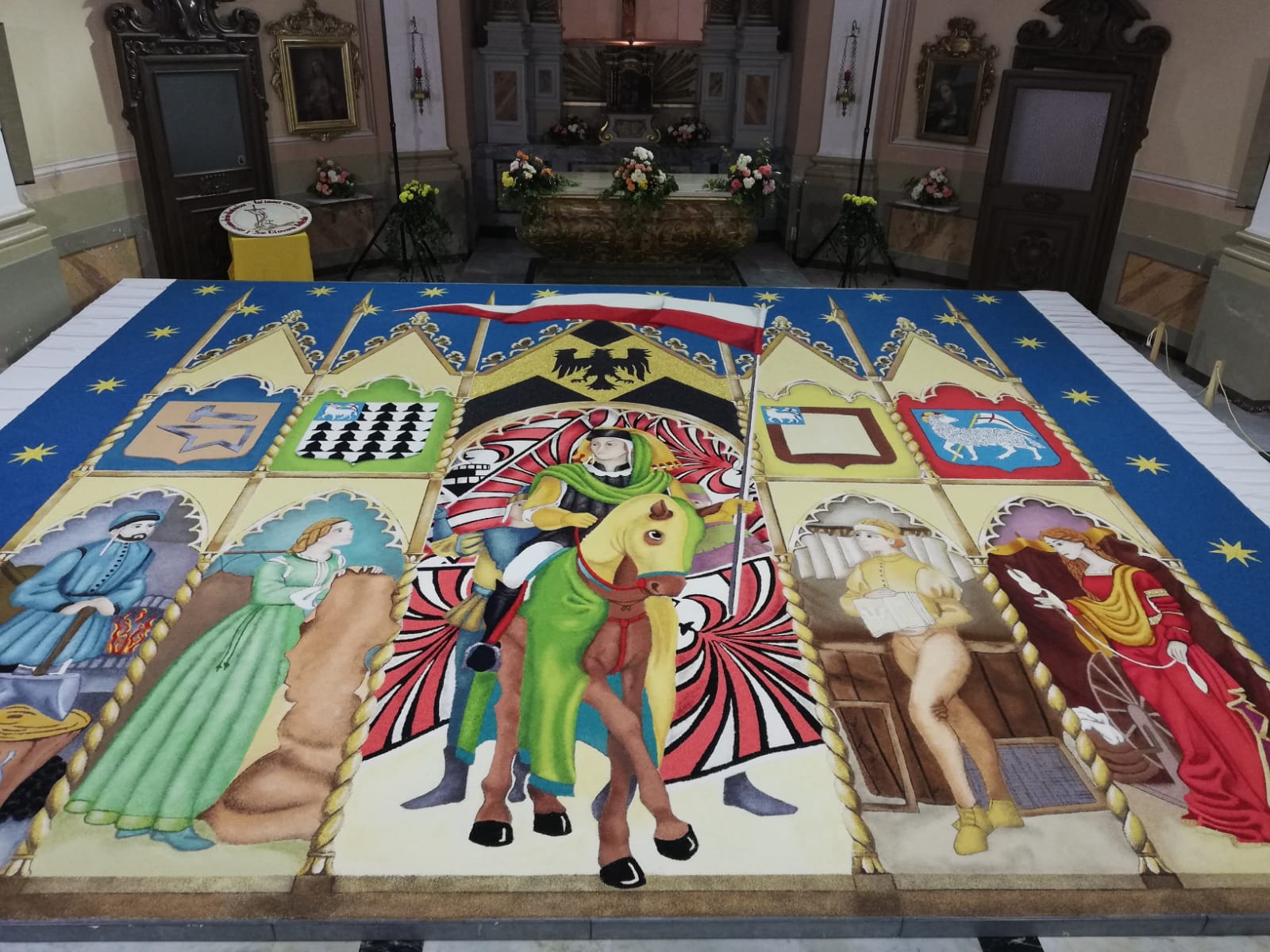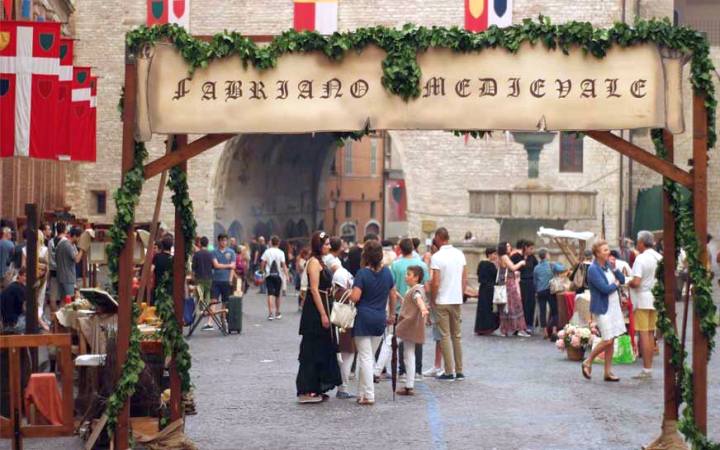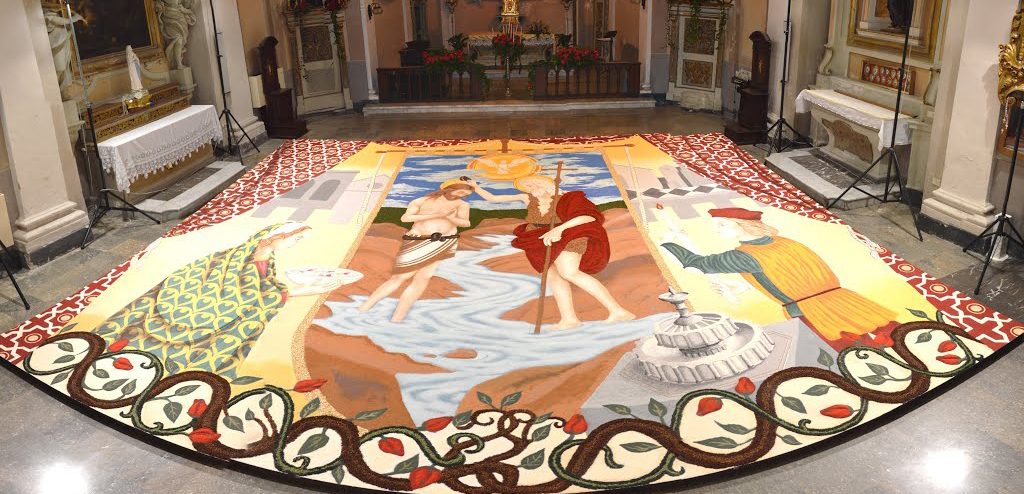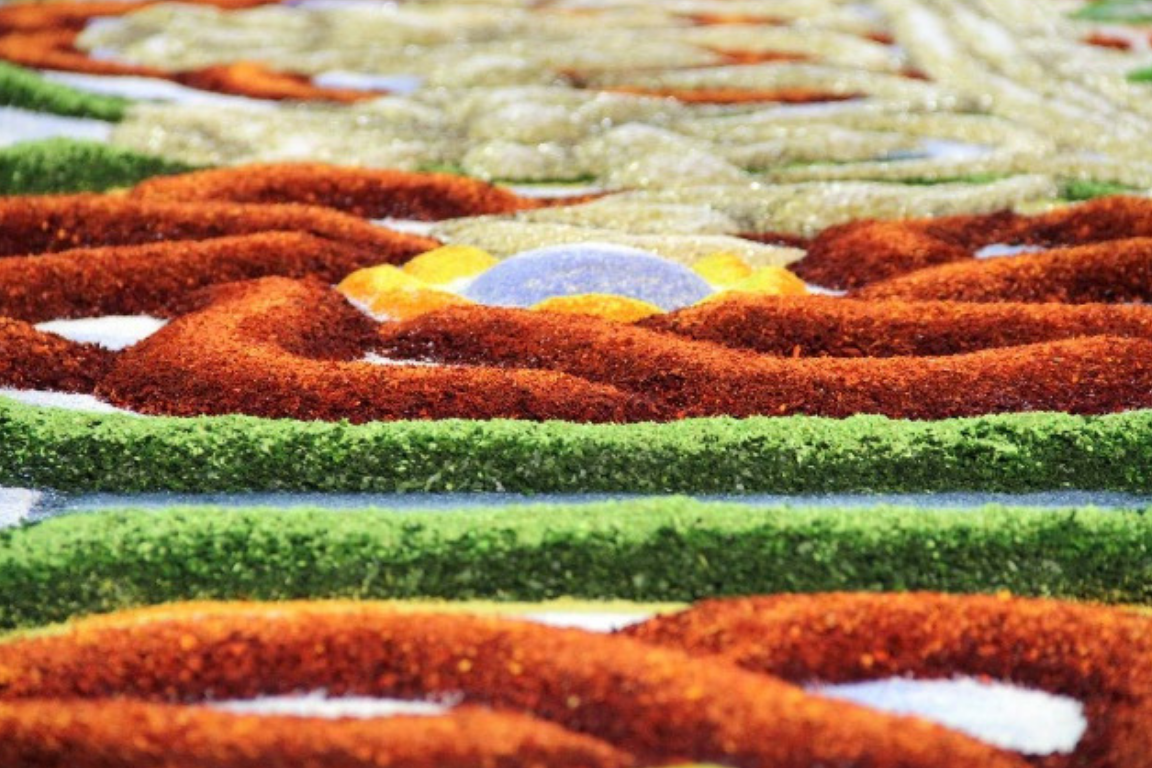Anyone who wants to get to know one of the still alive and heartfelt traditions of the Marche region must go to Fabriano in the month of June. The celebrations take place here which, starting on June 10th, culminate on the 24th with the festival dedicated to the patron saint. And this year the trip can be enriched by a visit to Leonardo's Madonna di Benois on loan to Fabriano from the Hermitage Museum in St. Petersburg until the end of June.
The Municipal Statute of 1436 speaks of the Palio of San Giovanni Battista and this ancient custom has been revived for a few decades as a historical re-enactment of the fourteenth century Fabriano which was the golden age for the city.
The Palio sees the inflorators of the four districts compete in a competition centered on artistic creations made of thousands and thousands of flower petals. These floral carpets represent the religious and popular soul of the place, an event with a profound collective meaning that also reveals the artistic propensity of the Fabriano people. The sketches are prepared by local artists, who transform them into scented works, with the patient combination of herbs and petals.
 The works concern scenes and figures dedicated to the cult of Saint John the Baptist and are impressive: each of the four teams creates an installation of between 42 and 48 square meters of surface worked between the cloisters and squares of the historic centre. Since the current year, the painting works underlying the artistic flower displays have been selected in a national competition on the theme: "to. D. 1406 Fabriano creative city”.
The works concern scenes and figures dedicated to the cult of Saint John the Baptist and are impressive: each of the four teams creates an installation of between 42 and 48 square meters of surface worked between the cloisters and squares of the historic centre. Since the current year, the painting works underlying the artistic flower displays have been selected in a national competition on the theme: "to. D. 1406 Fabriano creative city”.
The four works that can be admired in this edition are:
- Polyptych of the arts of the Porta del Borgo district, curated by Chiara Marinelli. It represents the deep roots of Fabriano creativity, which already in the 400th century was teeming with workshops and artisans. The panel portrays four figures, each symbol of the blacksmiths, tanners, paper workers and wool guilds, depicted in the four colors (blue, green, yellow, red) that distinguish the four gates of the city.
 - Hug of the Porta Cervara district, curated by Concetta Daldone. A vortex of colors that culminates in the central scene dedicated to Craftsmanship portrayed as a woman, depicted in the symbolic act of shaking the hand of UNESCO as a sign of homage to local creativity, against the background of a glimpse of the Piazza del Comune. The artist wanted to celebrate Fabriano and its traditions by projecting it into an innovative perspective.
- Hug of the Porta Cervara district, curated by Concetta Daldone. A vortex of colors that culminates in the central scene dedicated to Craftsmanship portrayed as a woman, depicted in the symbolic act of shaking the hand of UNESCO as a sign of homage to local creativity, against the background of a glimpse of the Piazza del Comune. The artist wanted to celebrate Fabriano and its traditions by projecting it into an innovative perspective.
- Fabriano on stage of the Porta del Piano district, edited by Charlotte Faderin, Nicola D'Alterio e Veronica Lilli. The city is seen as a stage, whose actors are landscape, monuments, views and characters. Three protagonist figures: Giovanni Battista who with his veil envelops the Gentile theater in a curtain featuring the Sturinalto fountain and the Palazzo del Podestà. On the left appears a woman depicting the art of flower decoration. Behind her the river Giano. at the top a golden pattern inspired by the work of Gentile da Fabriano.
- Omnia in manibus tuis of the Porta Pisana district, edited by Sara Giuliani. A three-dimensional fresco in time and space of the city of Fabriano, a journey into the arts and crafts along a path that starts from the medieval era and intends to harmonize the three dimensions of sustainable development - economic, social and environmental - throwing a bridge to the future through creativity. In the background appear the Apennine mountains, the sources of the Giano river and a valley rich in woods and crops. The economic activities of the ancient village are represented: the arts of the blacksmiths, the wool workers, the shoemakers, the leather tanners, the Guarnellari (manufacturers of work clothes for the farmers), the Merciai and the paper workers, testifying that everything is in our hands.
After admiring the many events of these festive days, including jousts and artisan workshops, processions and challenges, archers and knights, the visitor can refresh himself at the Medieval inns del Palio which arise in each neighborhood and which offer themed menus inspired by the historical re-enactment of culinary traditions. It is intriguing to enter the Middle Ages with a visit to the 4 Hosterie delle Porte on the occasion of medieval dinners. You will experience an evening out of time, full of fun and taste with typical cuisine... from eight centuries ago! The soft lights of the candles, the musicians, the jesters, the jugglers, the fire eaters and the waiters in period clothes welcome the visitor; the dishes are served on wooden sedan chairs and the table is set with terracotta crockery and wooden cutlery. The Prior releases the Permissio Circolandi with which the defendant can indulge in every pleasure in drinking, eating and drinking forbidden Games. The origin and meaning of the food is explained for each dish to delight diners with the curiosities of ancient habits and customs.
A series of events and proposals not to be missed!
Carla Virili

